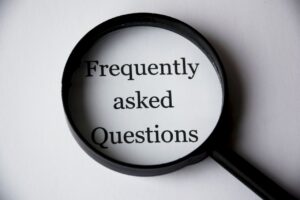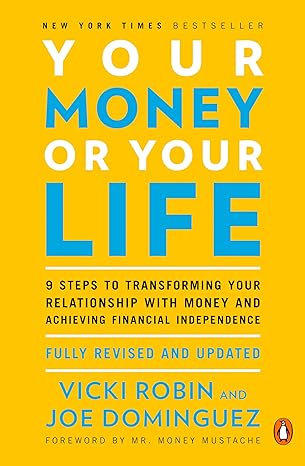Creating a well-structured budget is the cornerstone of financial success. In this comprehensive guide, we will share the best budgeting tips to help you manage your finances effectively, save more money, and achieve your financial goals.
Table of Contents
- Introduction to Budgeting
- Why Budgeting is Important
- How to Create a Budget
- Top Budgeting Tips
- Track Your Spending
- Set Realistic Goals
- Prioritize Essential Expenses
- Use Budgeting Tools
- Review and Adjust Regularly
- Personal Advice
- FAQ
- Recommended Book

Introduction to Budgeting
Budgeting is the action of make a plan to pay out your money. This spending idea is called a financial plan
. Creating a budget allows you to control in advance whether you will have sufficient money to do the item you need to do or would like to do. If you don’t have enough money to do everything you want to do, you can use this planning process to prioritize your spending and focus your money on the things that are most important to you.
Why Budgeting is Important
Budgeting is crucial for several reasons:
- Financial Control: It helps you take control of your money and ensures that you live within your means.
- Goal Achievement: It allows you to set and achieve financial goals, whether saving for a vacation, buying a home, or planning for retirement.
- Stress Reduction: Knowing where your money is going can reduce financial stress and improve your overall well-being.
How to Create a Budget
make a budget demand a few key steps:
- Calculate Your Income: Include all sources of income such as salary, freelance work, or rental income.
- List Your Expenses: Categorize your expenses into fixed (rent, mortgage) and variable (groceries, entertainment).
- Set money Goals: spot your short-term and long-term money goals.
- Create a Spending Plan: Allocate funds to each category of expenses and savings.
- Track Your Spending: Monitor your spending to ensure you are staying within your budget.
- Adjust as Needed: Regularly review your budget and make adjustments as necessary.
Top Budgeting Tips
Track Your Spending
One of the most critical budgeting tips is to track your spending. Knowing where your money goes each month can help you identify areas where you can cut back and save more.
Set Realistic Goals
Set achievable financial goals. Whether saving for an emergency fund or paying off debt, having clear, realistic goals will keep you motivated.
Prioritize Essential Expenses
Ensure you cover your essential expenses first, such as housing, utilities, and groceries. Once these are covered, you can allocate money to savings and discretionary spending.
Use Budgeting Tools
Leverage technology to help you budget more effectively. There are many apps and software available that can help you track your spending, categorize expenses, and visualize your financial situation.
Review and Adjust Regularly
Your financial situation may change over time, so it’s essential to review your budget regularly and make adjustments as needed. This will help you wait on route and reach your money goals.
Personal Advice
As someone who has successfully navigated financial challenges, my personal advice is to start small and stay consistent. Begin by tracking your spending for a month to understand your habits. Set small, achievable goals and gradually increase them as you become more comfortable with budgeting. Remember, budgeting is not about restricting yourself but about making conscious decisions about where your money goes.

FAQ
What if I have irregular income?
If you have an irregular income, base your budget on your average income over several months. Prioritize saving during higher income months to cover expenses during lower income periods.
How can I stick to my budget?
To stick to your budget, keep it realistic and flexible. Allow some room for unexpected expenses and treat yourself occasionally to stay motivated.
What should I do if I overspend?
If you overspend, don’t be too stiff on yourself. analysis your budget, spot where you went over, and adjust your spending plan accordingly.
Recommended Book
For those looking to dive deeper into budgeting and personal finance, I recommend the book “Your Money or Your Life” by Vicki Robin and Joe Dominguez. This classic book provides a comprehensive guide to transforming your relationship with money and achieving financial independence.

your money or your life
Your Money or Your Life: 9 Steps to Transforming Your Relationship with Money and Achieving Financial Independence
“Your Money or Your Life” by Vicki Robin and Joe Dominguez: A Comprehensive Review
Introduction
“Your Money or Your Life” by Vicki Robin and Joe Dominguez is a seminal work in the realm of personal finance and financial independence. Originally published in 1992, the book has inspired millions of readers to rethink their relationship with money and embark on a journey toward financial independence. In this review, we will delve into the key concepts, strengths, and weaknesses of this influential book, offering insights into why it remains a cornerstone of financial literature.
Overview
Key Concepts
The book is built around a nine-step program designed to transform readers’ financial lives. Here are the core concepts:
- Making Peace with the Past: Understanding how much money has flowed through your life and assessing whether it has brought you fulfillment.
- Being in the Present: Tracking every cent that comes into or goes out of your life.
- Where Is It All Going?: Categorizing your spending to see where your money is going.
- Making Life Energy Visible: Understanding the real cost of your job, including time and expenses.
- Valuing Your Life Energy: Increasing your income and decreasing your spending to free up life energy.
- Your Wall Chart: Visualizing your progress with a wall chart tracking income, expenses, and investment income.
- Capital and the Crossover Point: Building capital until your investment income covers your living expenses.
- Managing Your Finances: Strategies for managing and investing your money.
Strengths
- Holistic Approach: The book goes beyond mere budgeting and saving, addressing the psychological and emotional aspects of money.
- Actionable Steps: The nine-step program is practical and easy to follow, making it accessible to readers at all financial stages.
- Long-Term Vision: Emphasizes financial independence and living a meaningful life, rather than just short-term financial gains.
Weaknesses
- Dated Examples: Some of the examples and references are outdated, reflecting the time of the book’s original publication.
- Simplistic Investment Advice: The investment strategies are somewhat simplistic and may not be suitable for everyone, especially in today’s complex financial markets.
- Intensity: The rigorous tracking and introspection required may be overwhelming for some readers.

Detailed Analysis
Making Peace with the Past
The first step encourages readers to reflect on their past financial decisions without guilt or shame. This is a crucial step for building a healthy relationship with money. By calculating your total lifetime earnings and assessing whether they have brought you happiness and fulfillment, you can begin to understand your financial behavior.
Being in the Present
Tracking every cent is a powerful exercise that forces you to confront your spending habits. This meticulous approach helps you become more conscious of your financial decisions and can lead to significant changes in behavior.
Where Is It All Going?
Categorizing your spending reveals patterns and highlights areas where you can cut back without sacrificing your quality of life. This step is eye-opening for many readers and sets the stage for more informed financial decisions.
The Three Questions
The three transformative questions encourage deep introspection about your spending habits. They help align your financial behavior with your values and long-term goals, fostering a more intentional approach to money management.
Making Life Energy Visible
By understanding the true cost of your job, including commuting, clothing, and stress-related expenses, you gain a clearer picture of how much your job is costing you in terms of life energy. This step often leads to a reevaluation of career choices and lifestyle changes.
Valuing Your Life Energy
Increasing income and decreasing spending are straightforward concepts, but the book’s unique approach makes them more relatable. By framing these actions in terms of life energy, you become more motivated to optimize your financial situation.
Your Wall Chart
The wall chart is a powerful visual tool that tracks your progress toward financial independence. It provides motivation and a clear sense of direction, making your financial journey tangible and measurable.
Capital and the Crossover Point
The concept of the crossover point, where investment income covers living expenses, is a key milestone in the journey to financial independence. The book provides practical advice on building capital and achieving this goal.
Managing Your Finances
The final step offers strategies for managing and investing your money to ensure long-term financial security. While the investment advice is basic, it provides a solid foundation for further learning.

Personal Insights
As someone who has read and applied the principles of “Your Money or Your Life,” I can attest to its transformative power. The book helped me shift my perspective on money, viewing it as a tool to achieve my life goals rather than an end in itself. The emphasis on aligning spending with values and life purpose has led to greater fulfillment and financial stability.
FAQs
Is “Your Money or Your Life” suitable for beginners?
Yes, the book is accessible to readers at all stages of their financial journey. The nine-step program is easy to follow and provides a solid foundation for financial literacy.
How long does it take to see results?
Results vary depending on individual circumstances, but many readers report seeing significant changes in their financial behavior and mindset within a few months of implementing the steps.
Can the principles be applied in today’s financial climate?
While some examples are outdated, the core principles of the book are timeless and can be applied to any financial situation. Readers may need to adapt certain strategies to fit the current economic environment.
Recommended Book
For those looking to delve deeper into financial independence and personal finance, “Your Money or Your Life” is an essential read. Its holistic approach, practical steps, and emphasis on aligning money with life purpose make it a valuable resource for anyone seeking to achieve financial freedom.




